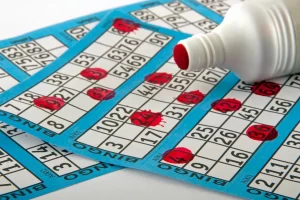You hear the caller’s voice, steady and clear. “Under the B… ten.” Your eyes dart across the card. There it is! But by the time your dauber hits the paper, the caller is already two numbers ahead. Sound familiar? That lag, that frustrating split-second delay, is the difference between a casual player and a bingo ninja. The good news? Speed and accuracy aren’t just innate talent—they’re skills you can absolutely develop.
Let’s dive into the real game within the game: training your brain and your hand to work in perfect sync. It’s less about luck and more about building a kind of muscle memory. Think of it like learning to type without looking at the keyboard. At first, it’s slow. But with practice, your fingers just know where to go. Your bingo game can work the exact same way.
Training Your Brain: The Foundation of Lightning-Fast Recognition
Before your dauber even leaves the cap, your brain has to process the number. This is where the race is truly won or lost. You need to shrink that processing time down to almost nothing.
Master the Lingo and the Patterns
Bingo callers don’t just say “forty-four.” They say, “All the fours, forty-four.” Or “two little ducks, twenty-two.” Honestly, if you don’t know the common nicknames, you’re already playing at a disadvantage. Make a cheat sheet for yourself. “Knock at the door” is 04. “Dancing queen” is 17. Knowing these by heart cuts out a crucial translation step in your brain.
And patterns! Sure, a straight line is simple. But when the pattern is a butterfly or a letter X, your brain shouldn’t be figuring out what that looks like mid-game. Study the pattern beforehand. Visualize it on your card. Your brain will then be primed to spot the necessary numbers, not just random spots.
The Power of Peripheral Vision and “Chunking”
Here’s a pro tip: stop staring directly at a single number on your card. Instead, soften your gaze. Try to take in the entire column—the whole B column, for instance—at once. Your peripheral vision is surprisingly powerful and faster at detecting changes than your focused central vision.
Another mental hack is called “chunking.” It’s how you remember a phone number—not as ten separate digits, but as three chunks. Apply this to bingo. Don’t see “B-10” as a letter and two digits. See it as one unit: “B10.” Train yourself to recognize “I-24” or “N-37” as a single, familiar symbol. This reduces cognitive load dramatically.
Optimizing Your Physical Game: Dauber Drills and Card Management
Okay, so your brain has identified the number. Now your hand needs to catch up. This is pure mechanics, and it’s where you can shave off precious tenths of a second.
Your Dauber is Your Wand – Choose and Use It Wisely
A good dauber feels like an extension of your hand. A clunky, dry, or leaky one is an anchor. Invest in a comfortable, well-balanced dauber. Test different grips. Do you prefer a light tap or a solid blot? Consistency is key. The goal is a single, confident mark that completely covers the number without bleeding through the paper. You know, a perfect little blob.
Practice your marking motion at home. Seriously. It sounds silly, but it works. Print out some old bingo cards and just practice marking random numbers called out by a video online. Build that muscle memory so you don’t have to think about the action during a real game.
Card Organization is Everything
How you arrange your cards on the table can make or break your speed. Chaos is the enemy.
- Create a Grid: Align your cards in neat, straight rows and columns. This creates a predictable visual field, making it easier for your eyes to scan from one card to the next.
- The “Stagger” Method: If you’re playing multiple cards, don’t just line them up. Stagger them so that, for example, all the B columns are roughly in the same vertical line. This minimizes the distance your eyes and hand have to travel between cards.
- Minimize Clutter: Get your drinks, purse, and lucky charms off the playing surface. You need a clear, clean space for unimpeded movement.
Putting It All Together: Drills for the Dedicated Player
You’ve got the theory. Now for the practice. Here’s a simple training regimen you can do at home to build that coveted speed.
| Drill Name | How To Do It | The Benefit |
| The Speed Call | Use an online bingo number generator set to a fast pace. Try to mark a single card perfectly. | Builds raw recognition and marking speed under pressure. |
| The Multi-Card Marathon | Play with 3-6 cards at a normal pace, focusing on smooth transitions between them. | Develops scanning rhythm and card management skills without panic. |
| The Pattern Sprint | Before the drill, choose a complex pattern. Then, using a number generator, race to complete it. | Trains your brain to prioritize pattern-specific numbers over everything else. |
Start slow. Accuracy first, speed second. It’s far better to mark four numbers correctly and a bit slower than to mark six quickly but miss one, costing you the game. Speed will come naturally as the movements become automatic.
The Final Mark: It’s About More Than Winning
At the end of the day, improving your bingo skills is… well, it’s genuinely fun. There’s a unique satisfaction in feeling your own progress, in that moment when you realize you’re no longer scrambling but flowing with the game. The frantic panic melts away, replaced by a calm, focused rhythm.
The real prize isn’t just the potential jackpot. It’s the quiet confidence of knowing you’ve honed a craft. It’s the sheer, unadulterated joy of the game itself, played at its highest level. So grab your dauber, take a deep breath, and get ready to play smarter, not just harder. The next number called could be yours.












